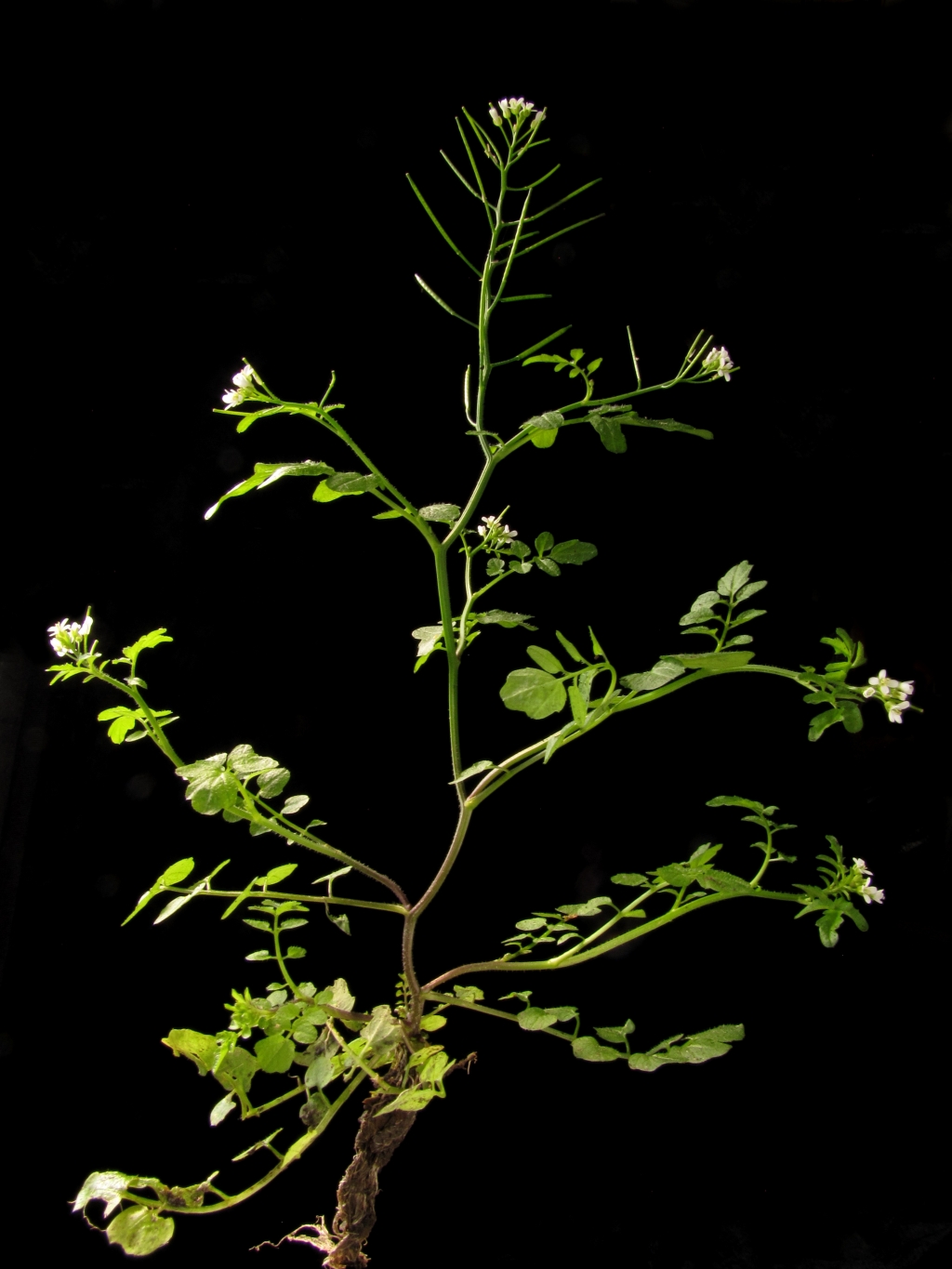Cardamine flexuosa
With. Wood Bitter-cressAnnual to perennial, to 50 cm high with a fibrous root system; flowering stems erect, or occasionally decumbent and rooting at nodes, moderately hairy throughout, rarely almost glabrous. Leaves thin with scattered, often tubercle-based hairs c. 0.3 mm long on the upper surface; basal leaves rosetted, to 15 cm long, pinnate with (1–)3–5(–7) pairs of lateral pinnae and a larger circular terminal leaflet, margins usually crenate; cauline leaves (2–)4–7(–10), becoming deeply dissected towards top of plant, mostly 3–6 cm long. Racemes many-flowered; sepals 1.5–2.5 mm long, with a few hairs; petals 3–4 mm long, white; mature style to c. 1 mm long. Fruits inclined at 45°–75° to a flexuose rachis, not or hardly overtopping open flowers of same inflorescence, 1.0–2.5 cm long, c. 1.0–1.5 mm wide; pedicels 5–10 mm long; seeds c. 1.0–1.2 mm long. Flowers all year.
GleP, VVP, GipP, OtP, WaP, CVU, EGU, HSF, HNF, OtR, Strz. Also SA, Qld, NSW, Tas. Native of Europe, Asia. Not as common or as widespread as Cardamine hirsuta with which it can be confused. Quite frequent in shaded gullies and beside streams in the suburbs of Melbourne and further east.
Thompson, I.R. (1996). Cardamine. In: Walsh, N.G.; Entwisle, T.J., Flora of Victoria Vol. 3, Dicotyledons Winteraceae to Myrtaceae, pp. 434–442. Inkata Press, Melbourne.
 Spinning
Spinning



